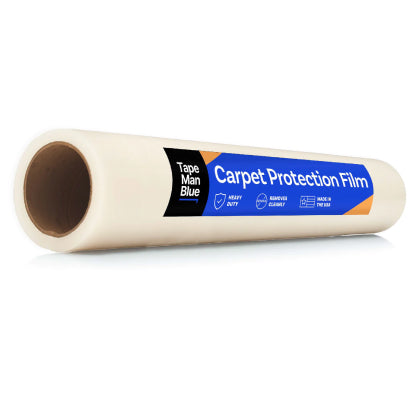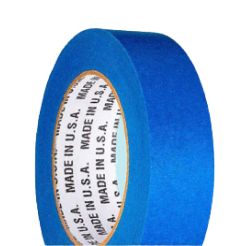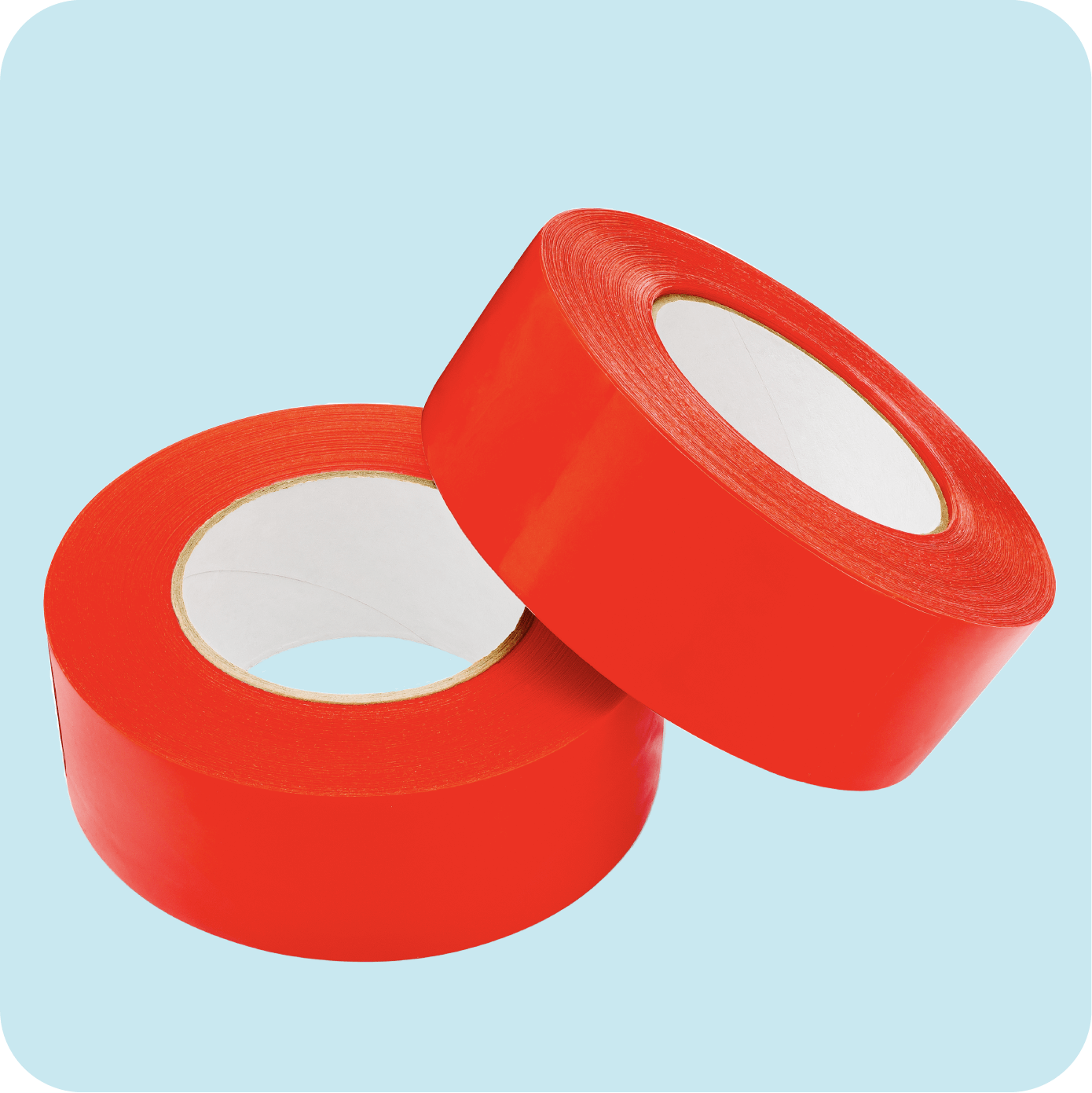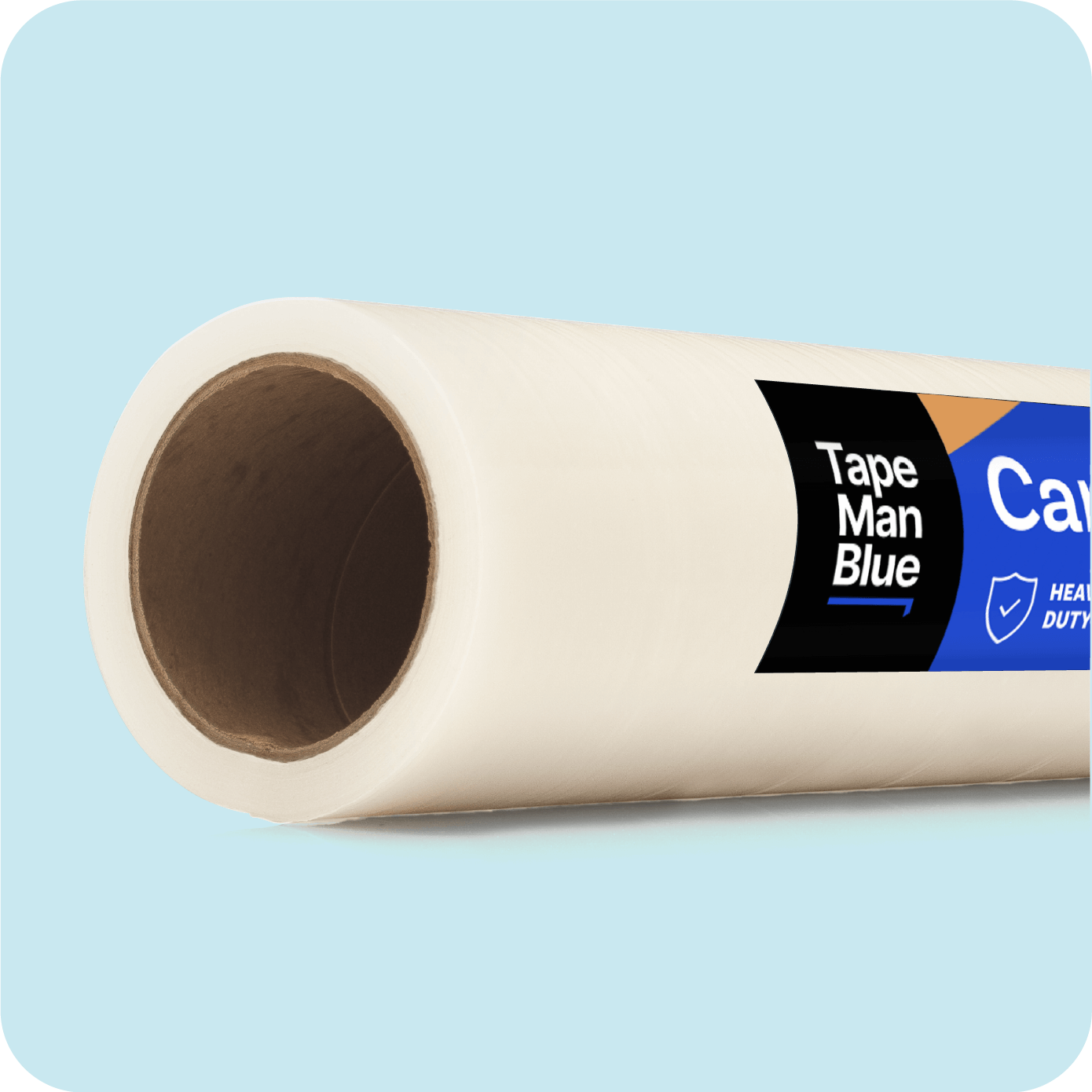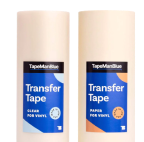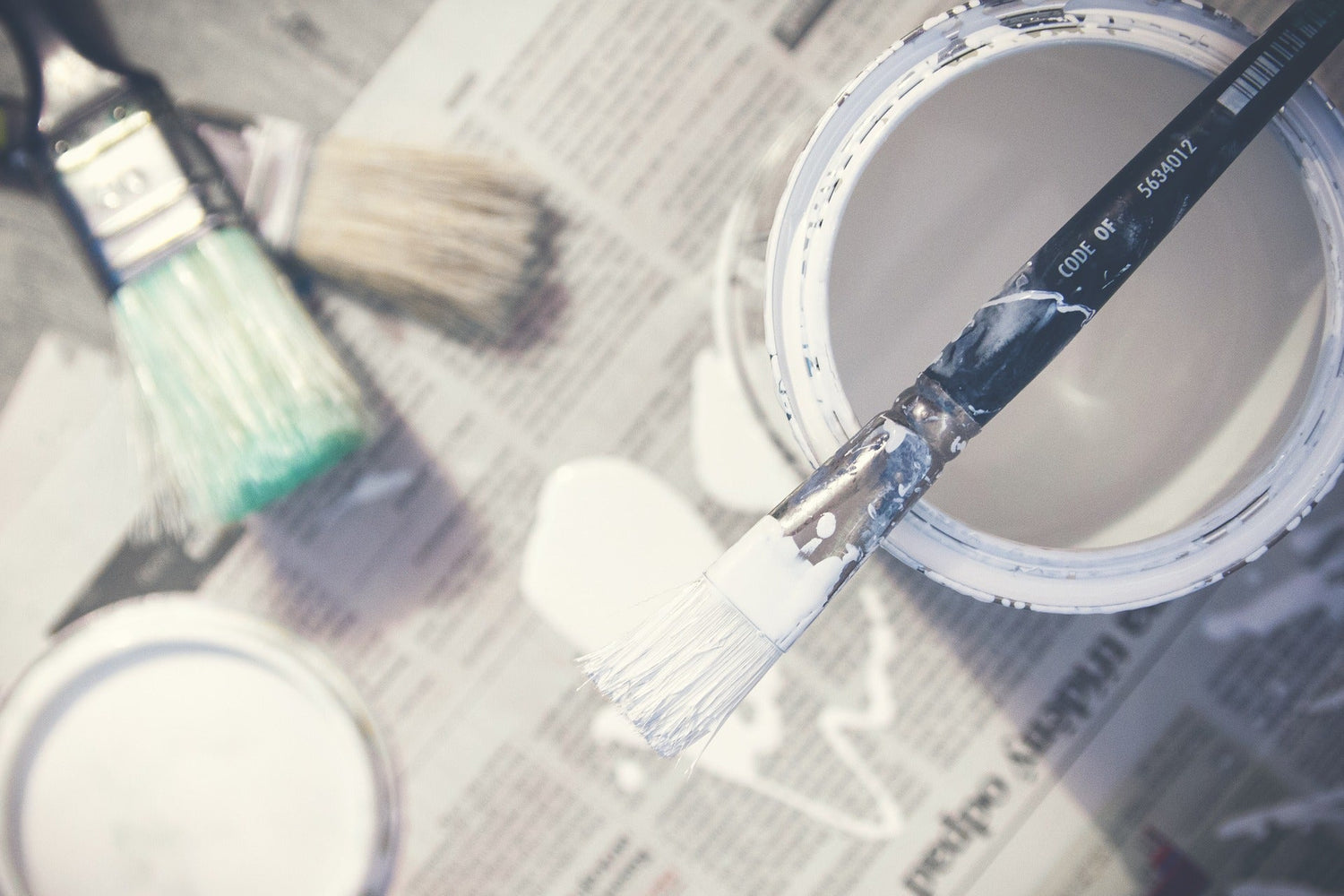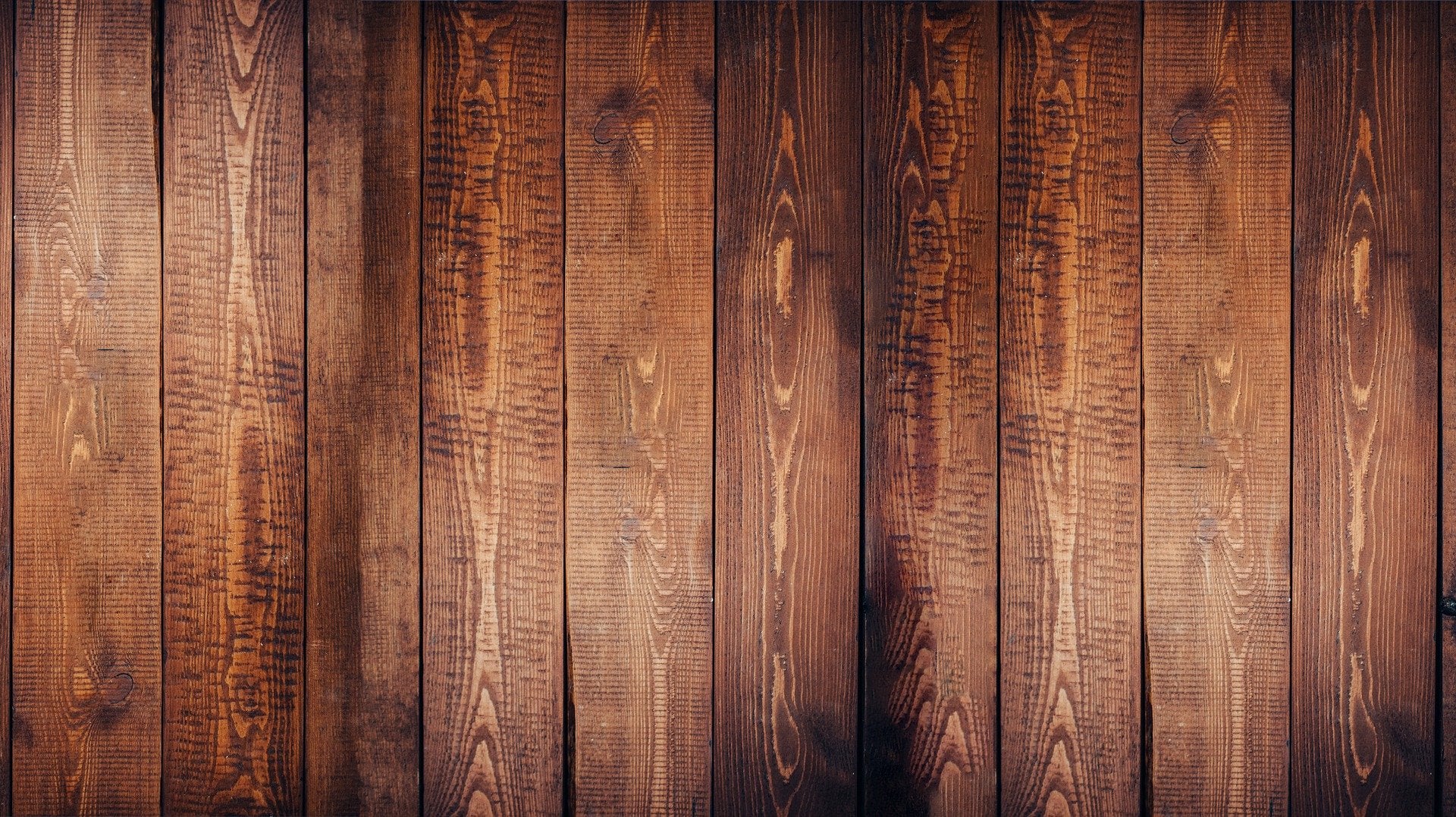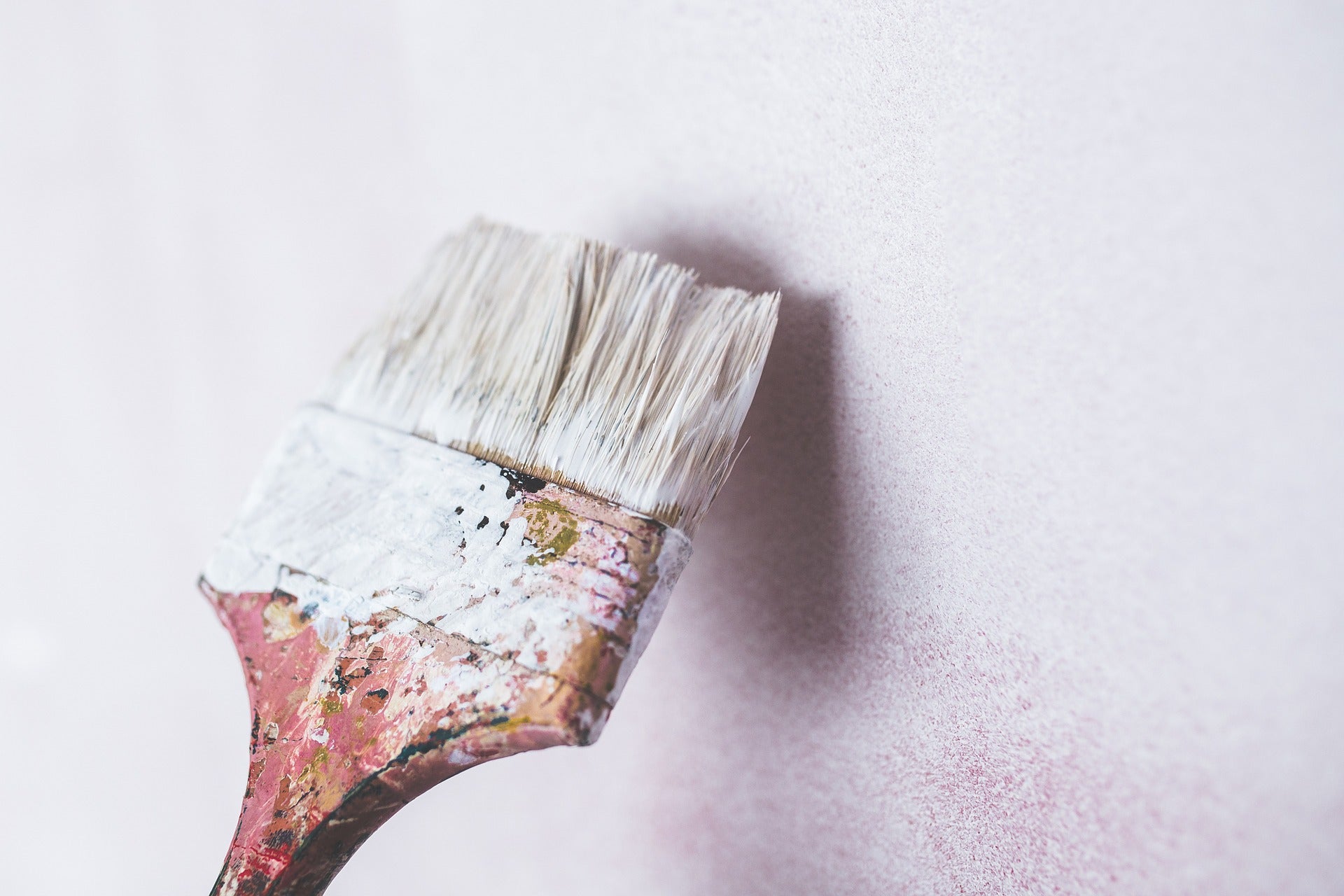
Whether you're doing a quick paint touch-up or hanging something on the wall with tape, a common problem you may run into is leaving the tape on too long and being left with sticky or unsightly residue. While this can be frustrating, don't worry! We'll explain how to remove tape residue off a variety of surfaces and materials and provide some tips on how to avoid leaving adhesive residue behind in your future projects.
How to Remove Tape or Adhesive Residue
Tape often sticks or leaves residue behind as it dries on a surface. When you leave tape too long, it has the chance to bond onto a surface and create residue or become a pain to remove. If you're experiencing this problem after a project, check out how to remove adhesive residue off of various surfaces, including:
- Walls: Use a hairdryer to address longer strips of tape or adhesive stuck on walls. Put the device on a medium to high heat setting — depending on how hot the hairdryer gets — and work in sections, either pulling the tape off or scraping adhesive with a putty knife as you go. Use a heat gun on a lower setting if you don't have a hairdryer handy. If you're really in a pinch, you can scrape and sand down the tape stuck to the wall. This method can ruin the wall finish and paint, so try other methods before using this as a last resort.
- Hardwood floors: Reach for a commercial cleaner that's designed to remove adhesive and follow the package safety and usage directions. If you prefer homemade cleaners, try vegetable or olive oil and scrub at the adhesive with a rag. If you need to remove tape or residue from hardwood floors, be sure the floors are finished so you don't risk having the cleaner or oil soak into the floors and stain them.
- Carpet: For a small spot of tape residue, you can grab an ice cube and a butter knife or dull putty knife. Place the ice on the adhesive until the spot hardens, and gently scrape it to remove. In this situation, freezing and hardening the adhesive makes it easier to remove rather than heating it and having it cling to more carpet fibers. For long stretches of tape residue, the ice method could be a bit trickier. Work in sections with plenty of ice cubes or try a heat method instead.
- Countertops: With durable, water-resistant counters, you can dampen the tape and scrape any residue left behind. Dampen a soft cloth with warm water and press it onto sections of the tape or the residue. Carefully peel up the tape or scrape away the dampened adhesive with your finger or a dull putty knife to avoid damaging your surfaces.
- Glass or metal: Windows or other glass or metal surfaces are nonporous, making them ideal to use rubbing alcohol for removing residue. Be sure to do a spot test, especially on metal, before taking a rag, adding a bit of rubbing alcohol and working it into the residue. Gently scrape or wipe the residue away.
You can use the different methods mentioned above for different surfaces, but be sure to do a spot test so you don't damage your surfaces. When finished, dry off surfaces and remove excess oil, alcohol or commercial products to avoid creating stains or damage. When in doubt, start with the gentlest option for your surfaces and work up from there.
How to Prevent Adhesive Residue
To prevent adhesive residue in your next project, take the following precautions when removing and applying tape:
- Use the right tape product for the job to get the results you want without leaving behind a strong adhesive residue.
- Treat the tape with heat before removing it to get as much adhesive as you can off the surface.
- When painting, use an edger or other tips for painting straight lines to cut down on how much tape you need.
- Find other hanging solutions for pictures and papers that don't involve tape.
Along with those tips for preventing adhesive residue, you can take further precautions with high-quality adhesive products and proper usage practices.
Use High-Quality Adhesive Products

Using the right product for the right job is one way to cut down on potential tape residue, especially when you work with high-quality products. Consider TapeManBlue for your adhesive needs, and use our array of products for a variety of jobs and projects:
-
Blue or green painter's tape: Our multi-use blue painter's tape has a medium tack adhesive that gives just enough stick to get the job done without leaving adhesive behind when used correctly. Painter's tape, as the name implies, is handy for painting — but you can also use this tape for short-term decorating and a variety of other projects. It's suitable to use on walls, trim, woodwork, hardwood floors, tile, glass and more. If you need a higher tack adhesive, look no further than green painter's tape. High-tack green painter's tape removes cleanly for up to 14 days and is great for painting rough, uneven surfaces both indoors and outdoors.
Shop Blue Painter's Tape
-
Surface protection: Help keep surfaces clean and safe as you work with a variety of self-adhesive temporary surface protection products. We carry carpet film, floor film, window film, countertop film and more so you can choose the right coverage for the job.
Shop Surface Protection
-
Specialty tapes: If you've got a specific job, you may need industrial specialty tape. Our UV-resistant red stucco tape works in applications involving cement, insulation, masonry and other construction needs. Strapping tape has a high-strength adhesive for bundling packages and can be used on the outside of boxes to prevent getting adhesive residue on products. Greenhouse tape is an industrial-strength option to reinforce seams or repair greenhouses.
Shop Specialty Tapes
Use Products Correctly
Reading up on the products you use can help prevent stubborn adhesive messes. To avoid leaving residue behind after a job, check how long a product can stay on a surface for clean removal. At TapeManBlue, our products have varying clean removal time frames:
- Blue painter's tape has a 21-day clean removal.
- Carpet, floor and countertop protection film have a 45-day clean removal.
- Window protection film has a 60-day clean removal.
- Red stucco tape has a 60-day clean removal.
You should also follow any package directions for how to apply and remove the tape and adhesive products. For instance, you should apply painter's tape onto dry surfaces, and when you remove it, slowly pull at a 45-degree angle. Slow removal ensures you don't pull paint off the walls, and it also allows you to check if you have any remaining residue or other issues as you peel the tape off.
Complete Your Projects With TapeManBlue
Tired of scraping away adhesive from low-quality tapes? Save yourself the time, effort and money you'd spend on clean-up and let TapeManBlue help with your next project. We carry a selection of high-performing, American-made tapes and films with various adhesive levels so you can find exactly what you need.
Check out our multi-use blue painter's tape, variety of industrial tapes and temporary surface protection films today to see the difference quality tape and adhesive makes. Get your job done right with adhesive products from TapeManBlue!
Shop Blue Painter's Tape Shop Surface Protection

